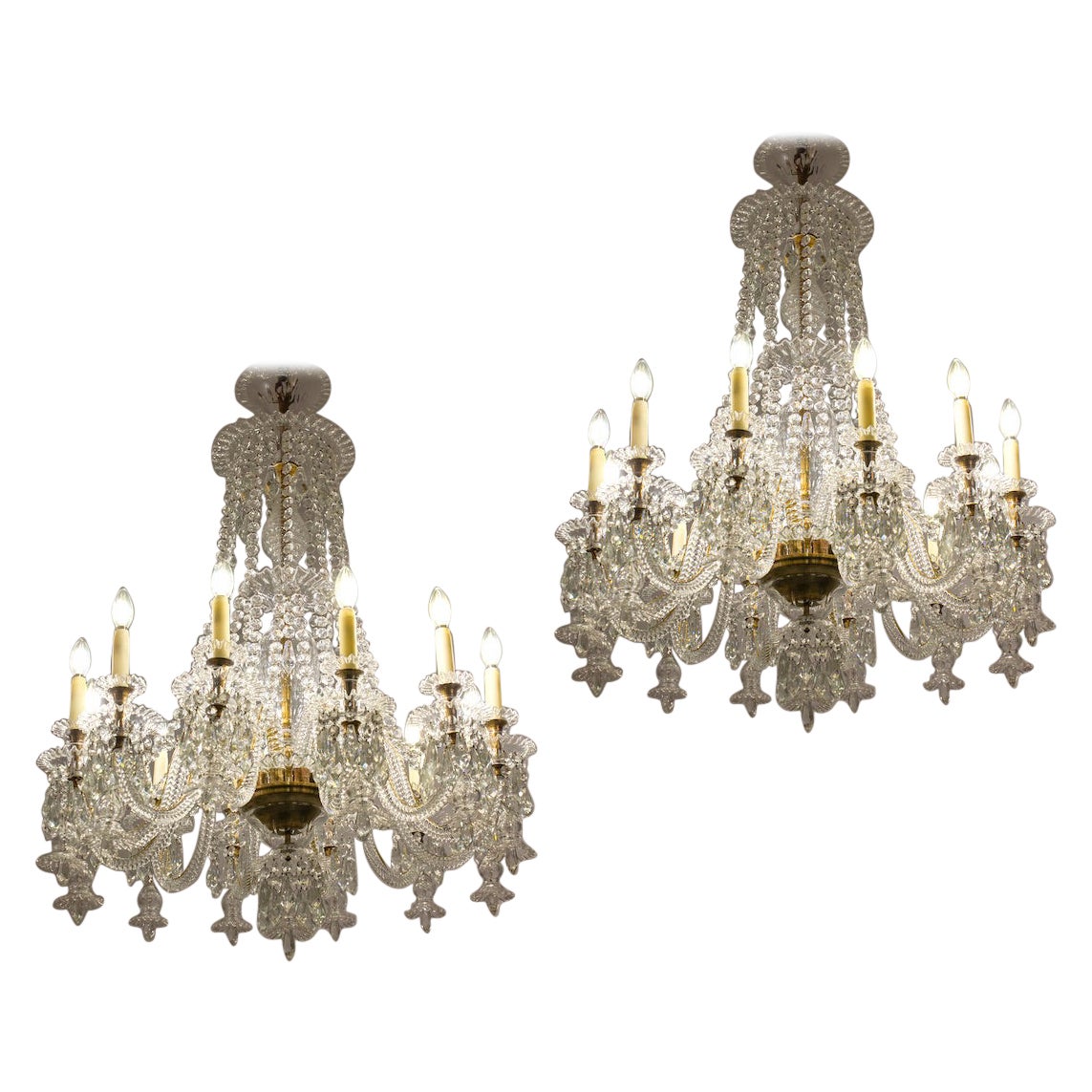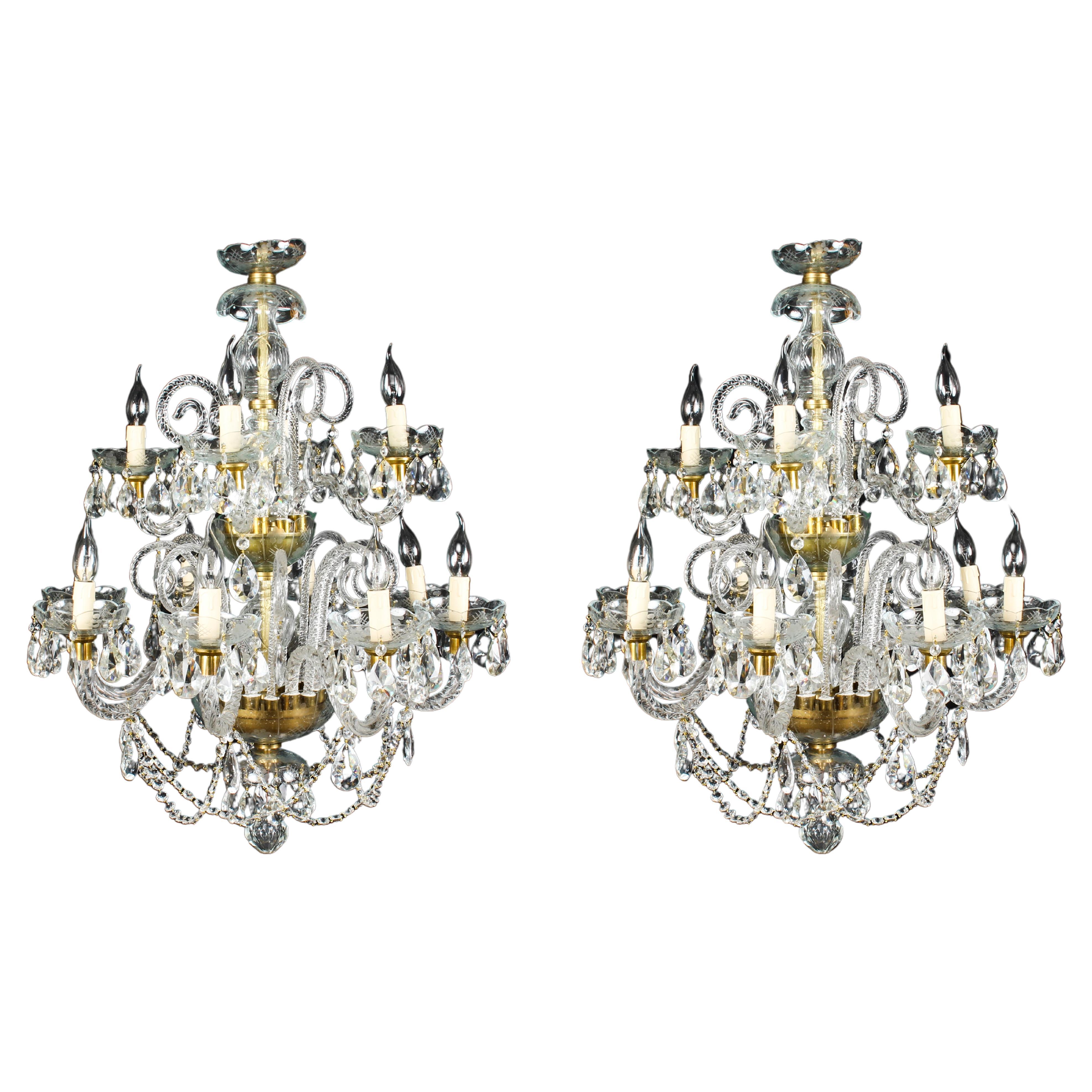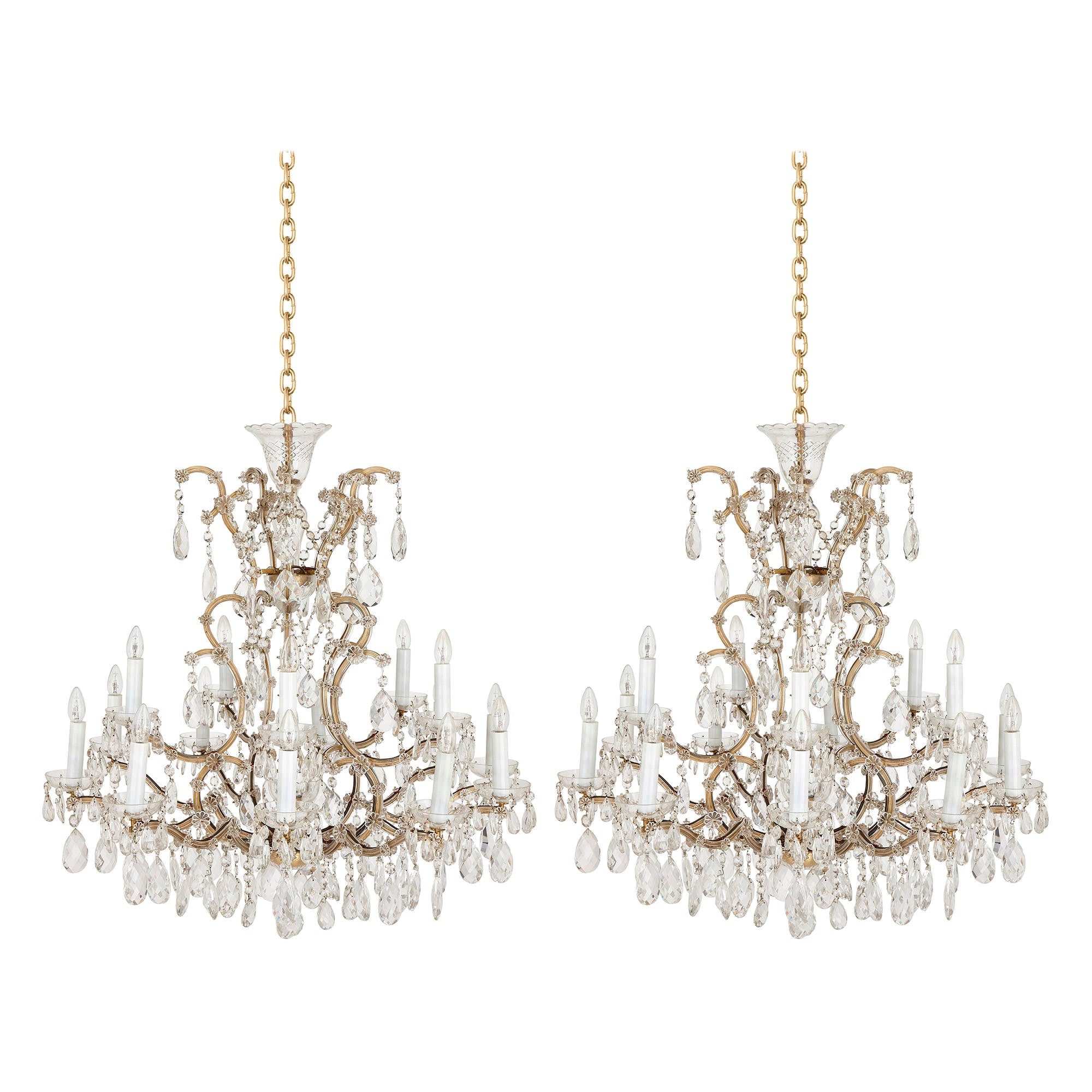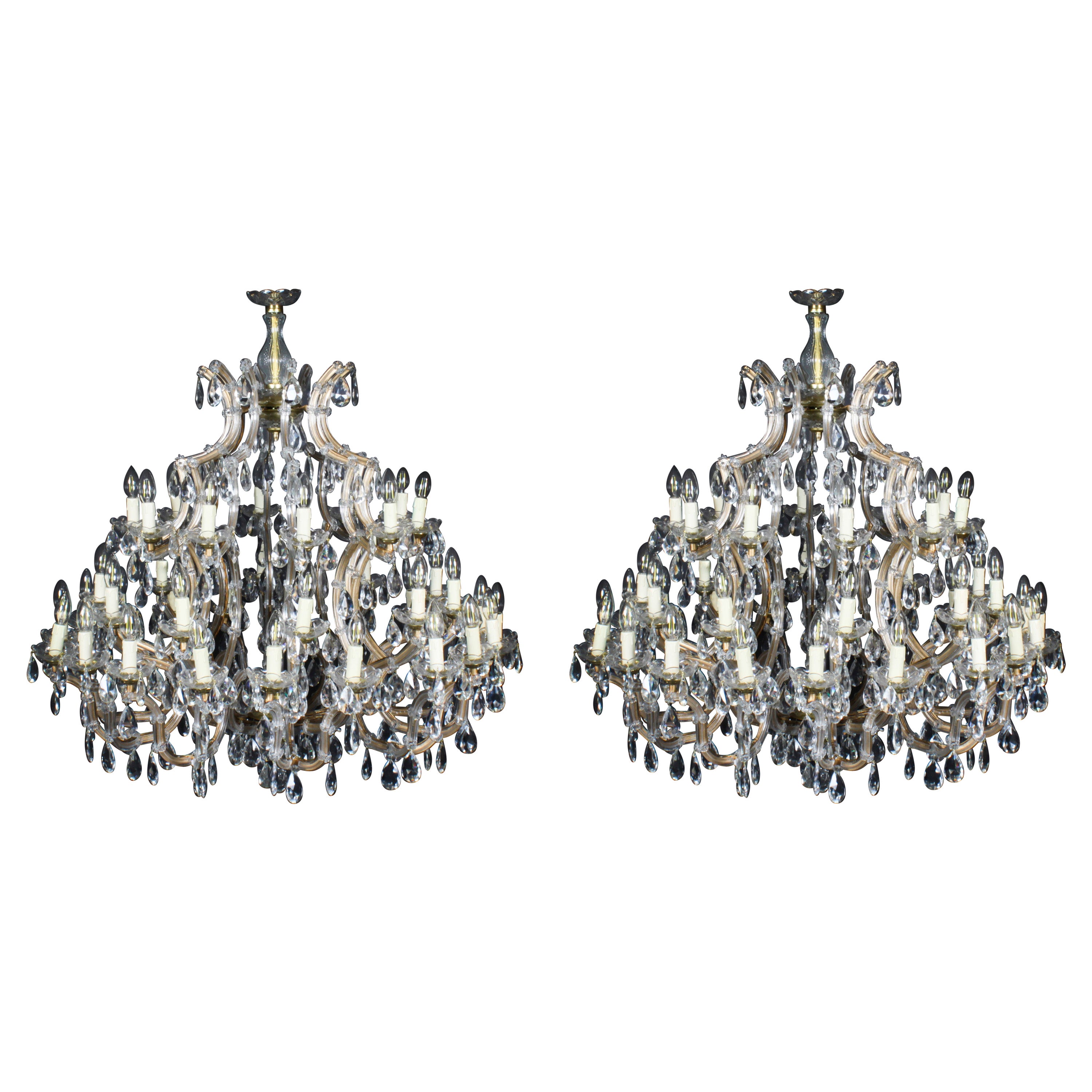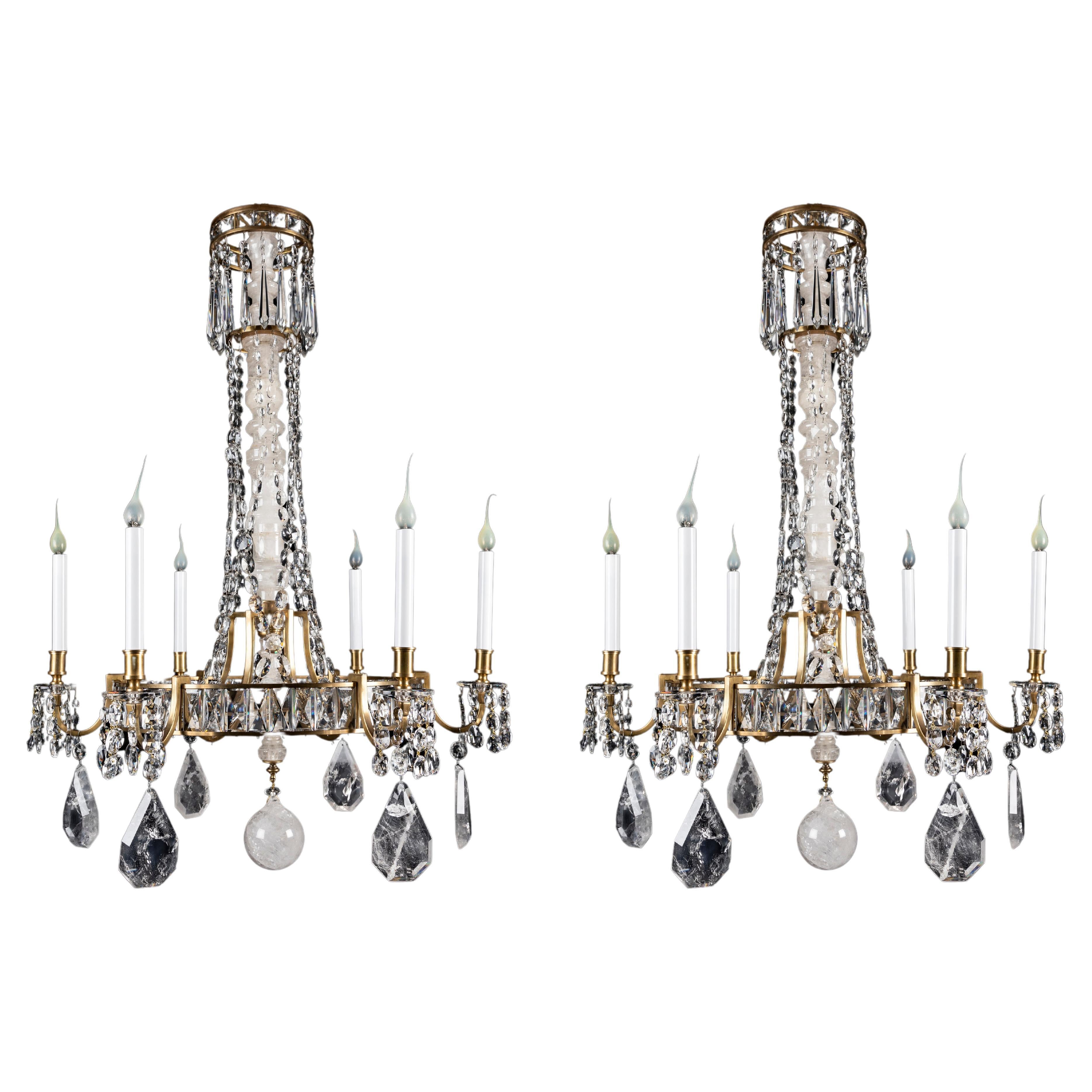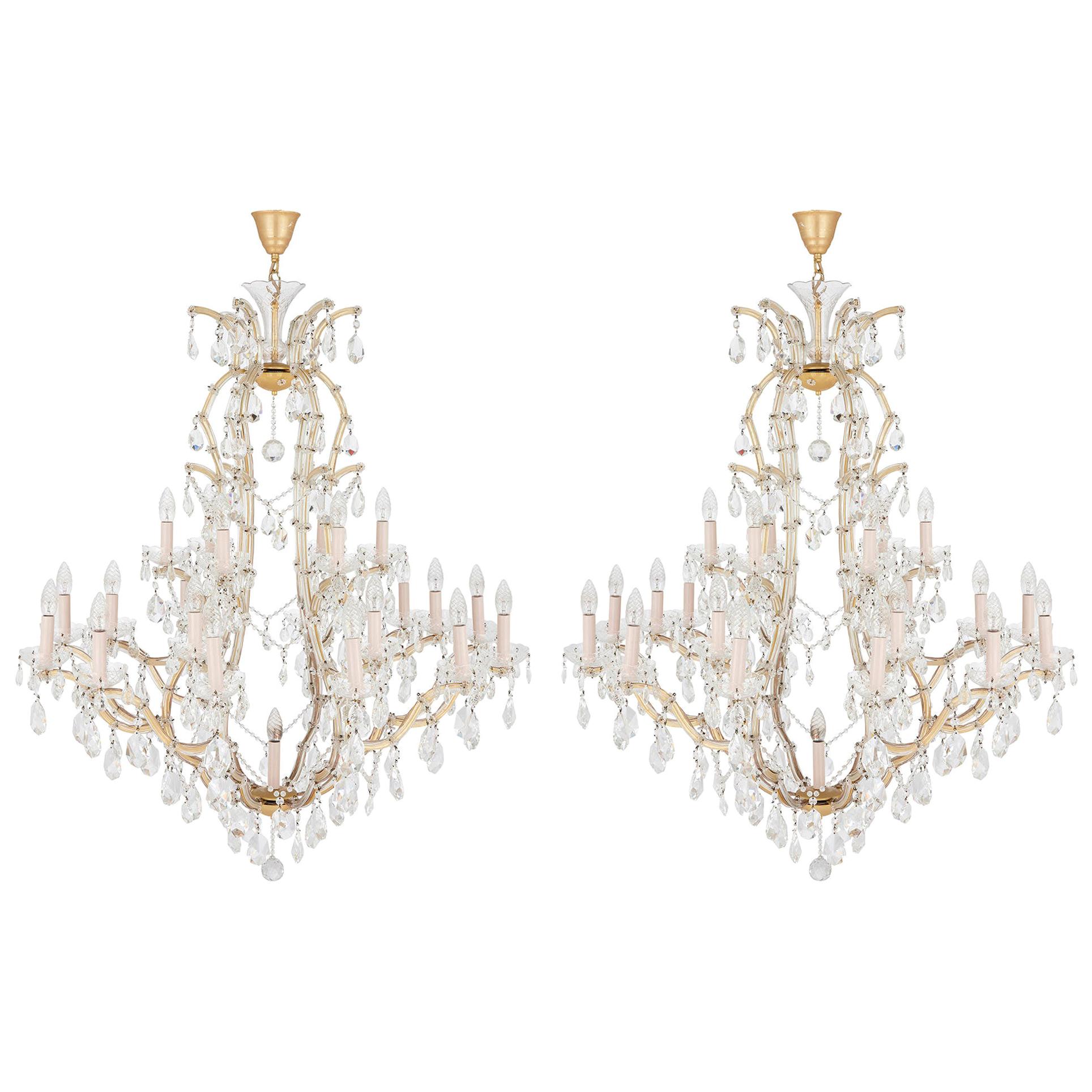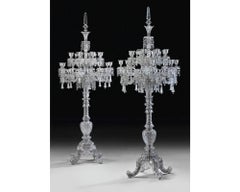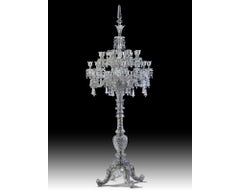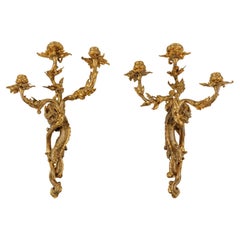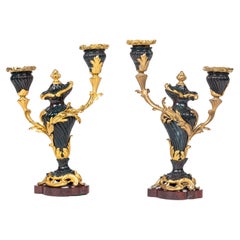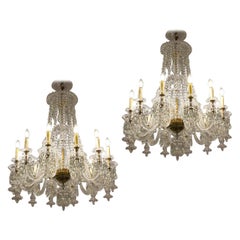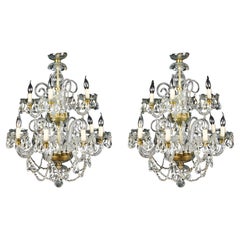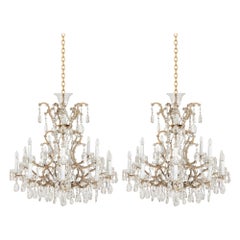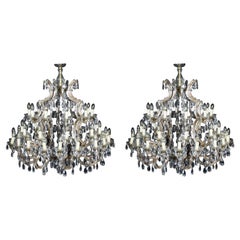Items Similar to A Large and Exceptional Pair of French Rock Crystal and Glass Chandeliers
Video Loading
Want more images or videos?
Request additional images or videos from the seller
1 of 14
A Large and Exceptional Pair of French Rock Crystal and Glass Chandeliers
$75,000
£56,938.72
€65,125.75
CA$104,785.88
A$116,544.77
CHF 60,856.06
MX$1,418,225.85
NOK 777,224.70
SEK 728,899.65
DKK 486,058.43
Shipping
Retrieving quote...The 1stDibs Promise:
Authenticity Guarantee,
Money-Back Guarantee,
24-Hour Cancellation
About the Item
Elevate your space to unparalleled heights of sophistication with this Large and Exceptional Pair of French Rock Crystal, Glass, and Wrought Iron Five-Light Chandeliers. Meticulously crafted, these chandeliers epitomize the fusion of artistry and elegance, creating a luminous spectacle that transcends mere illumination.
Each chandelier is a masterpiece of design, featuring an exquisite interplay of rock crystal and glass elements that cascade in a harmonious dance of light. The meticulously wrought iron framework provides a stunning foundation, adding a touch of old-world craftsmanship to the modern brilliance of crystal and glass. The result is a symphony of textures, shapes, and reflections, captivating the eye and transforming any space into a sanctuary of refined luxury.
As each chandelier gracefully suspends five lights, they cast a warm and inviting glow, creating an ambiance that is both timeless and contemporary. The meticulous attention to detail in the craftsmanship ensures that these chandeliers not only illuminate your surroundings but also serve as captivating focal points, enhancing the aesthetic allure of any room they grace.
This pair of French chandeliers is not merely lighting fixtures; they are a testament to the enduring appeal of classic design and unparalleled craftsmanship. Immerse yourself in the allure of these luminous treasures, where the past meets the present in a celebration of refined taste and timeless beauty. Acquire these exceptional chandeliers and let them become the crowning jewels of your interior space, transforming it into a haven of opulence and sophistication.
50" high x 42" wide
A truly exceptional pair of Jewel-like pendant chandeliers. Very good condition, all glass and crystals shine meticulously. Ready to hang.
- Similar to:Maison Baguès (Maker)
- Dimensions:Height: 50 in (127 cm)Diameter: 42 in (106.68 cm)
- Lampshade:Not Included
- Style:Art Deco (In the Style Of)
- Materials and Techniques:
- Place of Origin:
- Period:
- Date of Manufacture:20th Century
- Condition:
- Seller Location:Queens, NY
- Reference Number:1stDibs: LU1798238214222
About the Seller
5.0
Vetted Professional Seller
Every seller passes strict standards for authenticity and reliability
Established in 1980
1stDibs seller since 2016
63 sales on 1stDibs
Typical response time: 5 hours
- ShippingRetrieving quote...Shipping from: Queens, NY
- Return Policy
Authenticity Guarantee
In the unlikely event there’s an issue with an item’s authenticity, contact us within 1 year for a full refund. DetailsMoney-Back Guarantee
If your item is not as described, is damaged in transit, or does not arrive, contact us within 7 days for a full refund. Details24-Hour Cancellation
You have a 24-hour grace period in which to reconsider your purchase, with no questions asked.Vetted Professional Sellers
Our world-class sellers must adhere to strict standards for service and quality, maintaining the integrity of our listings.Price-Match Guarantee
If you find that a seller listed the same item for a lower price elsewhere, we’ll match it.Trusted Global Delivery
Our best-in-class carrier network provides specialized shipping options worldwide, including custom delivery.More From This Seller
View AllCristalleries De Baccarat, a Large Pair of French Cut-Crystal Tsarine Torcheres
By Cristalleries De Baccarat
Located in Queens, NY
Cristalleries De Baccarat, A Large Pair of French Cut-Crystal Twenty-Four Light Tsarine Torcheres, Standing Floor Chandeliers.
"A Magnificent Pair of Chandeliers"
Each central stem...
Category
20th Century French Floor Lamps
Materials
Crystal
Cristalleries De Baccarat, a Large French Cut-Crystal Tsarine Torchere
By Cristalleries De Baccarat
Located in Queens, NY
Cristalleries De Baccarat, A Large French Cut-Crystal Twenty-Four Light Tsarine Torcheres, Standing Floor Chandelier.
"A Magnificent Chandelier"
Each central stem issuing twenty-four out-scrolled candle branches suspending prisms and bell-flowers, on four splayed supports, in the Indian Maharaja style, stamped BACCARAT throughout.
86" high x 33" wide
Wired for electricity. In overall excellent condition. The torchère is fully complete and there are no damages associated.Ready to place.
Comparative Literature:
Lerch, Moscou, Splendeurs des Romanov, Exhibition catalogue, 11 July – 13 September 2009, Monaco, pp. 214-217.
M. Lerch, Baccarat: la légende du cristal, Exhibition catalogue, 15 October 2014 – 4 January 2015, Paris, pp.68-69.
D. Sautot, The Story of Baccarat, Paris, 1993.
Cristalleries de Baccarat:
The origins of the manufacture, also known as the Compagnie des Cristalleries de Baccarat, can be traced to 1764. On this year, King Louis XV accorded to the Bishop of Metz permission to establish a glass factory on his land, in the small village of Baccarat in Lorraine, in order to compete with the celebrated Bohemian production. Lorraine is traditionally a glass-making region, due to the abundance of silica in the soil and due to its large forests, which supplied the wood to fuel the ovens. Francois-Eugène de Fontenay, who joined the company in 1841, discovered that the addition of nickel oxide in the manufacturing process resulted in a perfectly clear product, 'crystal glass', that was free of discoloration and that imitated precious rock crystal. For this discovery, the Baccarat company was awarded a gold medal at the French Expositions des Produits de l'Industrie in 1844. Continually experimenting with their manufacturing process, the quality of Baccarat's 'crystal glass' improved, reaching the highest level by the end of the century.
The Baccarat manufacture rapidly became a leading producer with highly skilled maître-verriers. In 1823, Baccarat participated for the first time at the National Exhibition. Louis XVIII was seduced by the quality of the pieces presented, which received the praise of the jury and the first gold medal. As a result of their success and innovations, the manufacture gradually consolidated its reputation, which allowed it to dominate the French market.
The Russian fascination for Baccarat:
In 1867, Tsar Alexander II visited the Exposition Universelle in Paris and fell in awe in the sight of Baccarat’s stand...
Category
20th Century French Floor Lamps
Materials
Crystal
A Pair of French Japonisme Three-Light Dragon Bronze Wall Appliques, Lievre
By Edouard Lievre
Located in Queens, NY
A Pair of French Japonisme Three-Light Dragon Bronze Wall Appliques, Sconces Attributed to Edouard Lievre, circa 1870.
Exuding the opulent allure of 19th-century Japonisme, this exq...
Category
Antique 19th Century French Japonisme Wall Lights and Sconces
Materials
Bronze
A Rare and Exquisite Pair of Ormolu-Mounted Bloodstone Two-Light Candlesticks
Located in Queens, NY
A Rare Pair of Ormolu-Mounted Bloodstone Two-Light Candlesticks, Resting on Jasper Bases, Circa 1790
Transport yourself to the pinnacle of historical elegance with this extraordinar...
Category
Antique 18th Century French Louis XVI Candlesticks
Materials
Ormolu
An Exceptional Pair of Champleve Enamel Ormolu Candelabra by Sevin & Barbedienne
By Louis-Constant Sevin, Ferdinand Barbedienne
Located in Queens, NY
Illuminating Heritage: An Important "Exhibition" Pair of Ferdinand Barbedienne and Louis Constant Sevin Champleve Enamel and Ormolu Eight-Light Candelabra / Lamps
In the realm of de...
Category
Antique 19th Century French Napoleon III Candelabras
Materials
Bronze, Enamel, Ormolu
$75,000 Sale Price
40% Off
Magnificent Pair of Ormolu-Mounted Pink Chinese Porcelain Three-Light Cadelabras
Located in Queens, NY
A Magnificent Pair of Ormolu-Mounted Pink Chinese Porcelain Three-Light Candelabras – A Masterpiece of East and West
This fabulous and large pair of 19th-century Louis XVI style orm...
Category
Antique 19th Century French Louis XVI Candelabras
Materials
Bronze, Ormolu
You May Also Like
Pair of Exceptional Large French Cut- Crystal Chandelier 1930'
By Baccarat
Located in Rome, IT
A pair Exceptional and rare rare twelve-light crystal chandelier in the manner of Baccarat. The 12 lights are on two floors. The crystals are perfectly preserved.
Cleaned and re-wir...
Category
Vintage 1930s French Art Deco Chandeliers and Pendants
Materials
Crystal, Metal
Pair of Vintage Venetian 12 Light Crystal Chandeliers 20th Century
Located in London, GB
This is a beautiful pair of vintage Venetian two tier crystal chandeliers with twelve lights each and beautiful clear crystal drops, dating from the second half of the 20th century.
...
Category
20th Century Chandeliers and Pendants
Materials
Crystal
Pair of Bohemian Faceted Glass Rococo Style Chandeliers
Located in London, GB
Pair of Bohemian faceted glass Rococo style chandeliers
Bohemian, 20th Century
Measures: Height 109cm, diameter 101cm
This pair of luxurio...
Category
20th Century Czech Bohemian Chandeliers and Pendants
Materials
Metal
Antique Pair English 41 light Ballroom Crystal Chandeliers 1920s
Located in London, GB
This is a beautiful pair of English Ballroom crystal chandeliers each with forty-one lights arranged over three tiers, and circa 1920 in da...
Category
Vintage 1920s English Chandeliers and Pendants
Materials
Crystal
A Pair of Large Hollywood Regency French Bagues Style Rock Crystal Chandeliers
By Maison Baguès
Located in New York, NY
A Pair of Unique Large French Hollywood Regency Bagues Style circular form gilt bronze, cut rock crystal and crystal multi light chandeliers ...
Category
20th Century French Hollywood Regency Chandeliers and Pendants
Materials
Crystal, Rock Crystal, Bronze
Pair of Bohemian Faceted Glass Rococo Style Chandeliers
Located in London, GB
Pair of Bohemian faceted glass Rococo style chandeliers
Bohemian, 20th century
Measures: Height 130cm, diameter 105cm
This pair of luxurious chande...
Category
20th Century Czech Bohemian Chandeliers and Pendants
Materials
Cut Glass
More Ways To Browse
French Crown Jewels
Cast Iron Chandelier Art Deco
Cubist Chandelier
Flow Blue Lamp
Lightolier Chandelier 1950s
Mid Century 3 Globe Lamp
Moroccan Ceiling
Multi Colored Glass Chandeliers
Murano Turquoise Chandelier
Origami Lamp
Peach Chandelier
Perforated Lampshade Metal
Ph5 Pendant Lamp
Saucer Ceiling
Six Light Empire Chandelier
Three Arm Ceiling Lights
Toleware Light
Wrought Iron Globe
